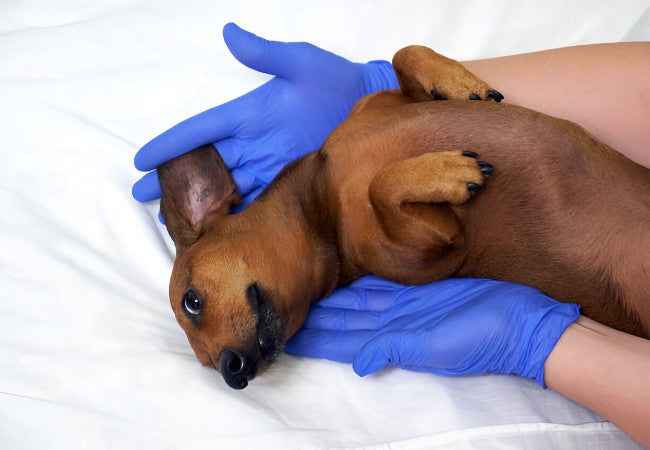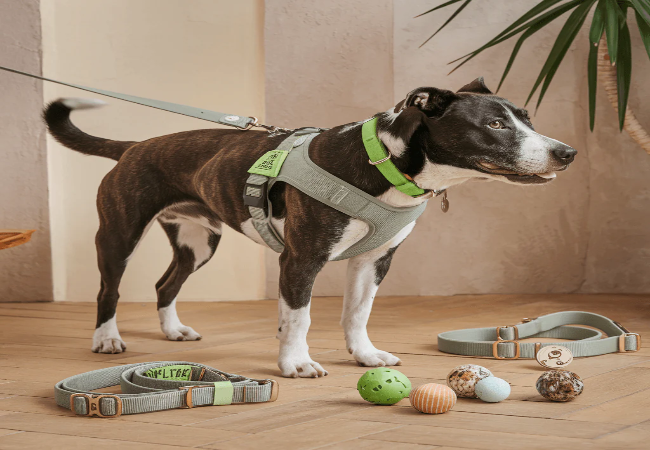Vet’s 2025 Guide to Canine Plague (Yersinia pestis) Rare but Serious in Dogs 🩺🐾

In this article
Vet’s 2025 Guide to Canine Plague (Yersinia pestis) Rare but Serious in Dogs 🩺🐾
By Dr. Duncan Houston BVSc
💡 Introduction
Plague in dogs is caused by Yersinia pestis, a zoonotic bacterium transmitted by infected rodents or fleas. While rare—due to canine resistance—it can lead to serious illness in dogs and pose health risks to humans. Awareness and rapid veterinary care are essential.
1. How Dogs Get Infected ⚠️
- Flea bites carry Y. pestis from infected rodents.
- Ingesting infected rodents or contact with infected tissue.
- Geographic hotspots include the western and southwestern US, especially rural and semi‑wild areas.
2. Forms of Plague & Clinical Signs
Dogs may develop one of three forms, each with distinct symptoms:
- Bubonic plague: most common. Presents with fever, lethargy, painful swollen lymph nodes (buboes), loss of appetite, vomiting, diarrhea, dehydration, cough, and mouth lesions.
- Septicemic plague: bacteremia leading to systemic illness—possible bleeding disorders and shock.
- Pneumonic plague: rare but most dangerous; dogs develop pneumonia, cough with blood, and pose a risk of airborne transmission to humans.
3. Why This Is Rare in Dogs
- Dogs are naturally more resistant to Y. pestis infection, and many remain asymptomatic.
- Serologic studies in endemic areas detect ~2% exposure, with actual illness being uncommon.
4. Diagnosis (2025) 🧪
- History & exam: recent exposure risk, lymph node enlargement, respiratory signs.
- Bloodwork & urinalysis: assess infection, possible bacteremia.
- Cultures/PCR from blood, lymph node aspirates or sputum—confirmed before antibiotics when possible.
- Pulmonary imaging if pneumonic form is suspected.
- PPE & biosafety: Veterinary staff must use gloves, masks, and handle specimens with caution.
5. Treatment Protocols ❤️
5.1 Immediate Veterinary Care
- Hospitalization and strict isolation/quarantine to protect staff and owners.
- Start broad-spectrum antibiotics immediately: aminoglycosides (streptomycin, gentamicin) or tetracyclines (doxycycline).
- Supportive therapy: IV fluids, nutrition, antiemetics, and oxygen for respiratory distress.
5.2 Ongoing Monitoring
- In severe pneumonic cases, respiratory support including oxygen or mechanical ventilation.
- Antibiotic duration: typically 10–14 days, though may be prolonged for septicemic or pneumonic forms.
- Frequent reassessment of lymph nodes, fever, hydration, and respiratory status.
6. Zoonotic Risk & Precautions
- Dogs can transmit Y. pestis to humans via fleas, respiratory droplets (rarely), or direct contact with infected tissues.
- Owners and veterinary staff must practice flea control, wear protective equipment, and isolate infected dogs until cleared.
7. Prognosis & Recovery
- With prompt treatment, most dogs recover fully, especially from bubonic and septicemic forms.
- Pneumonic form is more guarded and carries higher fatality risk without rapid intervention.
- Delays in diagnosis or treatment reduce survival and increase zoonotic risk.
8. Prevention🔒
- Flea control: regular, success-guaranteed flea preventatives year-round, especially in endemic regions.
- Rodent avoidance: keep dogs away from wild rodent activity—no access to woodpiles, outdoor garbage, or burrows.
- Educate owners: recognizing early signs and seeking immediate vet care.
9. Ask A Vet Support 🩺
- 24/7 triage for febrile, lethargic dogs with possible exposure.
- Flu-like symptom tracking, lymph node photo uploads, and notification if respiratory signs escalate.
- Quarantine and flea control reminders, plus guidance on owner infection risk reduction.
- Follow-up prompts for monitoring antibiotic course completion and recovery.
🔍 Key Takeaways
- Canine plague is rare but serious, with zoonotic potential.
- Transmission occurs via infected fleas or rodents; dogs may exhibit lymph node swelling, fever, and respiratory distress.
- Diagnosis relies on culture/PCR, careful biosafety practices, and supportive imaging.
- Prompt antibiotic therapy and isolation dramatically improve outcomes.
- Flea control and rodent prevention are key preventive measures.
- Ask A Vet assists owners and vets with monitoring, quarantine compliance, and protection against zoonotic spread.
🩺 Conclusion ❤️
Though uncommon, plague (Y. pestis) remains a potentially dangerous disease for dogs and their people in endemic areas. In 2025, swift recognition, antibiotic treatment, and strict isolation alongside smart flea and rodent control are essential. With Ask A Vet’s real‑time monitoring, alerts, and support tools, pet owners and veterinary teams can respond effectively, keeping dogs and their families safe and healthy.🐶✨
Dr Duncan Houston BVSc – delivering expert infectious disease guidance with compassion and clarity.
Visit AskAVet.com and download the Ask A Vet app for early disease alerts, photo tracking, quarantine reminders, and expert vet advice through every step. ❤️






